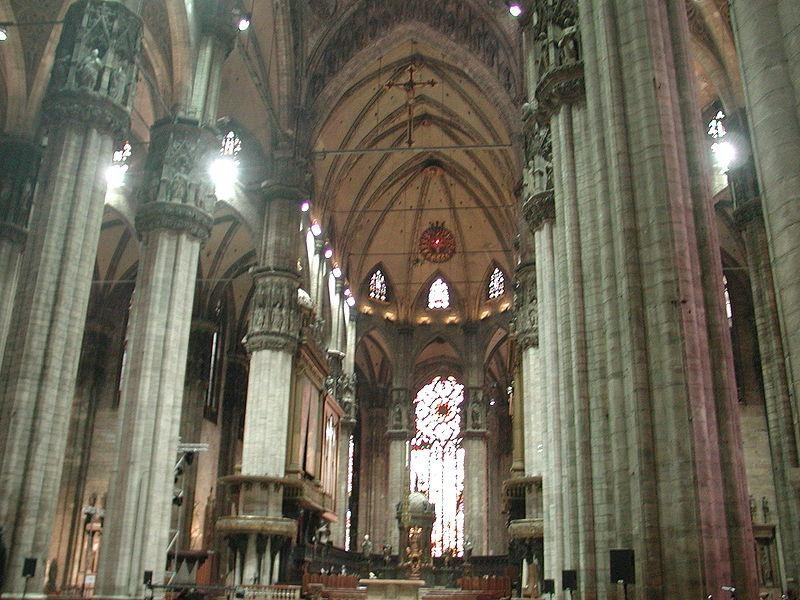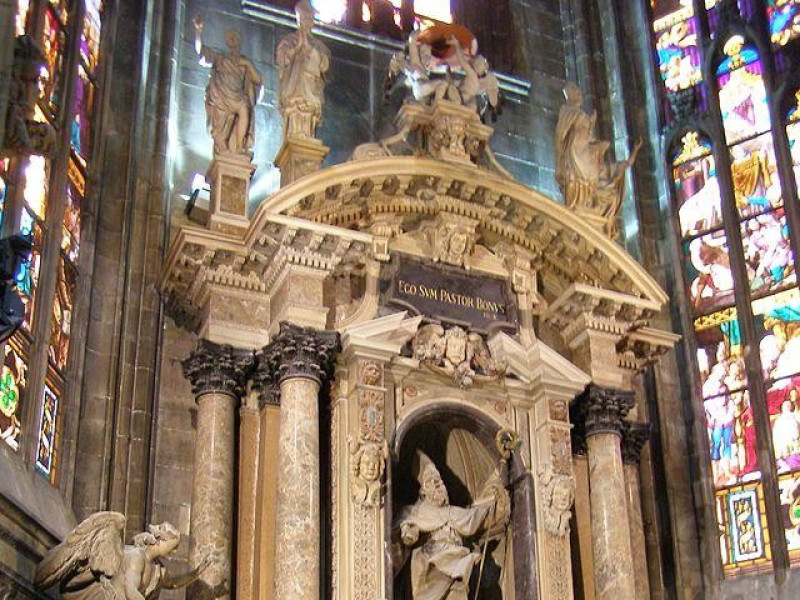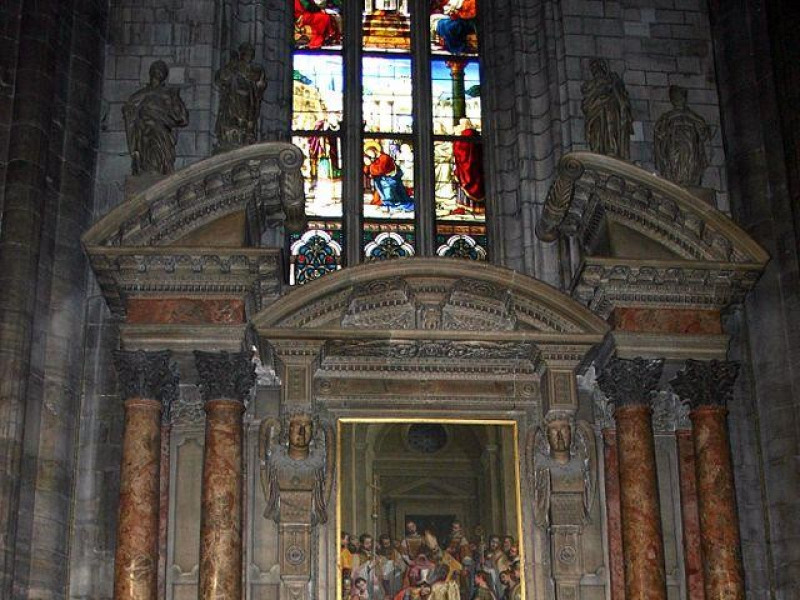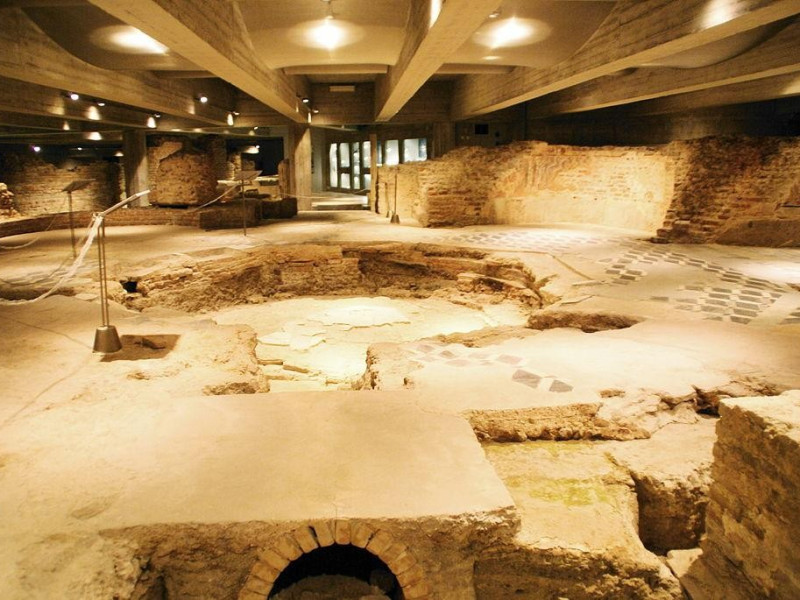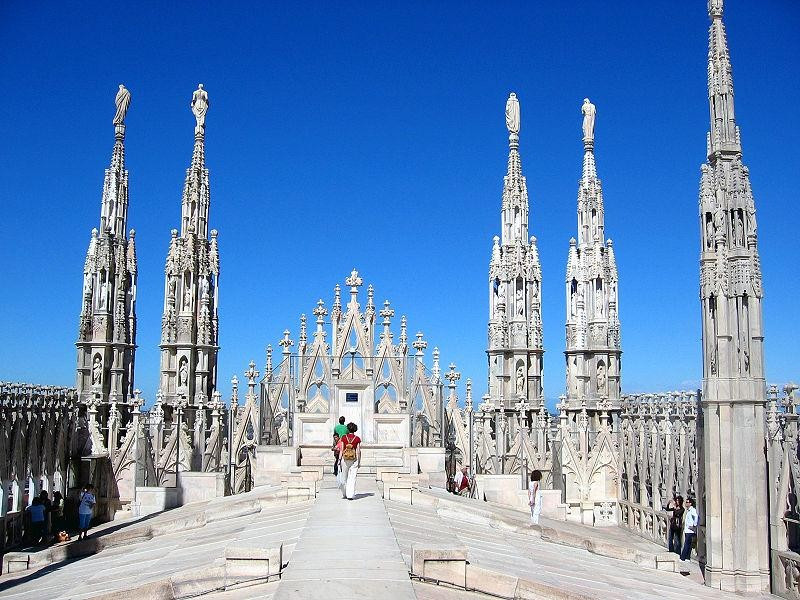Duomo di Milano
Milan Cathedral, one of the largest religious buildings in Europe (158 meters long, 93 wide and high 108), is dedicated to St. Mary Rising and is topped by the famous "Madonnina", gilded copper statue by Giuseppe Perego symbol of the city. The project dates back to 1386, by the will of Archbishop Antonio da Saluzzo and Gian Galeazzo Visconti, Lord of Milan, but the construction lasted for six centuries, according faithful to the original design. The high altar was consecrated in 1418 by Pope Martin V. Among the architects succeeded in the works (Giovannino de 'Grassi, Filippino degli Organi, Solari, Amadeo, Pellegrino Tebaldi, Bassi, Buzzi, Ricchino, Croce, Cagnola, Carlo Felice Soave, Pollack, Zanoia and Amati, who completed the project in 1813) there was also Leonardo da Vinci. There followed a long series of restorations, particularly after the damage of World War II. Built entirely of marble, the Cathedral boasts 3.400 statues that making it, in its uniqueness, the symbol of the so-called art "flourished Gothic". The other great decorative cycle concerns fifty monumental stained glass, from the beginning of the fifteenth century to the end of the twentieth century. The Cathedral has a Latin cross, with five naves and transept with three, with a deep presbytery and a polygonal apse. The structure is composed of pillars and walls reinforced with buttresses; the walls are alive with half-pillars, arches and windows with pointed arches. The roof terrace is unique in Gothic architecture. On the front there are five doors; interior decoration includes the series of altars of Pellegrini, numerous tombs and chapels. Part of the Cathedral are the Treasure, the Crypt and the Sacristies. From inside the Duomo it can access to the basement, where it is visible the floor of the fourth century, as the panoramic terraces on the city.



